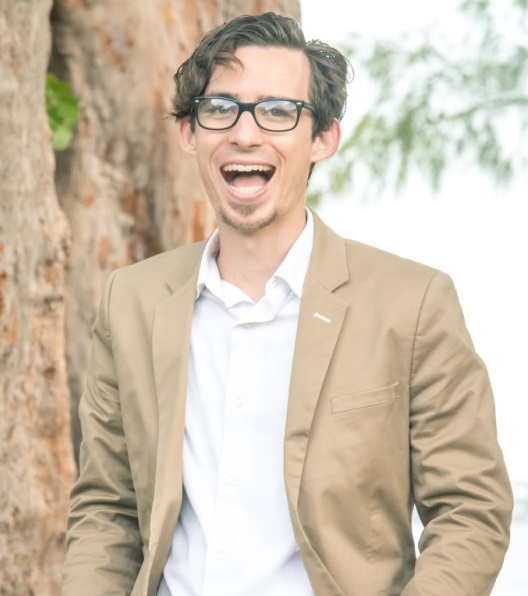 MICHAELJAYBERLIN/SHUTTERSTOCK
MICHAELJAYBERLIN/SHUTTERSTOCK
“A story is based on what people think is important, so when we live a story, we are telling people around us what we think is important.” —Donald Miller, “A Million Miles in a Thousand Years”
Have you ever asked a student to tell you their story? When getting to know your students, you might ask what their hobbies or interests are. But by asking for their story, you can learn so much more.
We all possess a story that is uniquely our own. Like a novel or a film, our stories are made up of dynamic characters, detailed settings and captivating plots. When a person tells their story, they invite listeners into a lively world, revealing how they see themselves (character), their context (setting) and their circumstances (plot).
When listening to a student’s story, we can ask ourselves questions such as:
►Who are the significant characters?
►Do they have a positive or negative relationship to their setting?
►What are the significant plot points?
►Do they see themselves as the hero or the victim of their story?
►What is their family life like?
►What conflicts are they facing?
Embedded within these stories are ideas, emotions, values and hurts that are influencing our students’ direction in life. But these narratives aren’t finished; they are unfolding right in front of us. As their teacher, counselor or leader, you are a significant character in their story right now. You can make a difference by assessing the story your students find themselves in and co-author a new chapter with them.

Derrick Hatch
When I was a teenager, I was often depressed and even suicidal. But when I shared my story with caring adults, they listened to me and trained me to help other suicidal young people find hope again. They are the reason why I teach youth today.
How do we utilize the power of story in youth development?
It starts with creating a safe space within your youth program. We can strive to create a culture where “You can tell me anything,” is possible. But saying those words isn’t enough; we need to build time into our schedules for these deep conversations. Many students feel like their voices go unheard by adults.
Imagine them having a structured time when they know someone will listen and take them seriously. Whether their stories are happy, sad, weird or frustrating, you can cultivate trust over time so that you can give students insight into where their stories can go from here.
By listening to what they value and discerning their needs, you then create relevant curriculum. This curriculum should strive to address the child holistically based on the physical, emotional, social or spiritual needs their stories present.
For example, with a group of students who display aggressive behaviors, you facilitate role-playing scenarios where they can act out alternative ways of dealing with anger. This gives youth a sense of agency, that despite what they’ve experienced, they can make choices that guide them into a better future.
Gear programming to the child
At Urban Youth Impact, our mission is to love, equip and empower inner-city youth to fulfill their God-given purpose.
First, we love them by listening to their stories, learning how they perceive themselves and committing to be a caring adult who will guide them in life.
Second, we equip them as a whole person, providing high-quality programming in areas such as literacy, life skills, leadership, the arts and spiritual development.
Finally, we empower them to live out their story with newfound passion and purpose.
For more on related programs and research, go to
► Youth Today’s OST Hub | Language & Literacy
When I think of our mission and the power of story, I think of Jacob.
Jacob was a sixth grade student in our after-school program who was prone to outbursts of anger when provoked. One day in a small group, we discussed the story of Jesus’ friends abandoning him at the cross. The middle school boys started sharing their stories of feeling lost and alone. Jacob then opened up about what it’s been like growing up without a father and how angry it made him feel.
Then Jacob began to cry. The other boys in the room didn’t laugh at him, but instead gathered around and prayed for him. Those boys and I invited Jacob to be part of our campus drum ensemble, where he learned how to channel his emotions through music and eventually performed at an event.
Later that year, his father (who he hadn’t spoken to in years) contacted him and asked if they could still have a relationship. Months earlier, Jacob might have said no. But by telling his story, working through his pain and being surrounded by caring students and staff, he was able to forgive his father and have a relationship with him.
Many young people today are experiencing a narrative void, a lack of direction. They are searching for a story to live by, one that will give them meaning, purpose and hope. We are in a critical position as students’ stories are facing challenges like never before. As young people struggle to find their place in the world, we can come alongside them. We can start by asking a question loaded with potential: “Can you tell me your story?”
Derrick Hatch is a teacher and director of the CREATE program at Urban Youth Impact and co-host of the podcasts “Life In The Gray” and “Urban Youth Impact.” He is the recipient of the “Next Generation of Leaders” Award from the National AfterSchool Association.





























